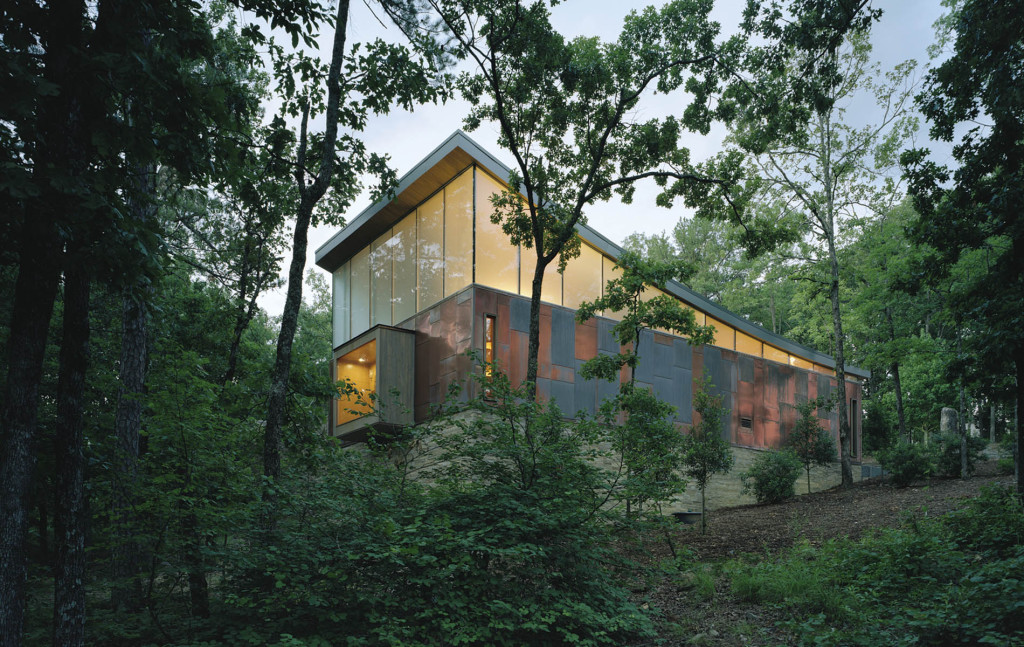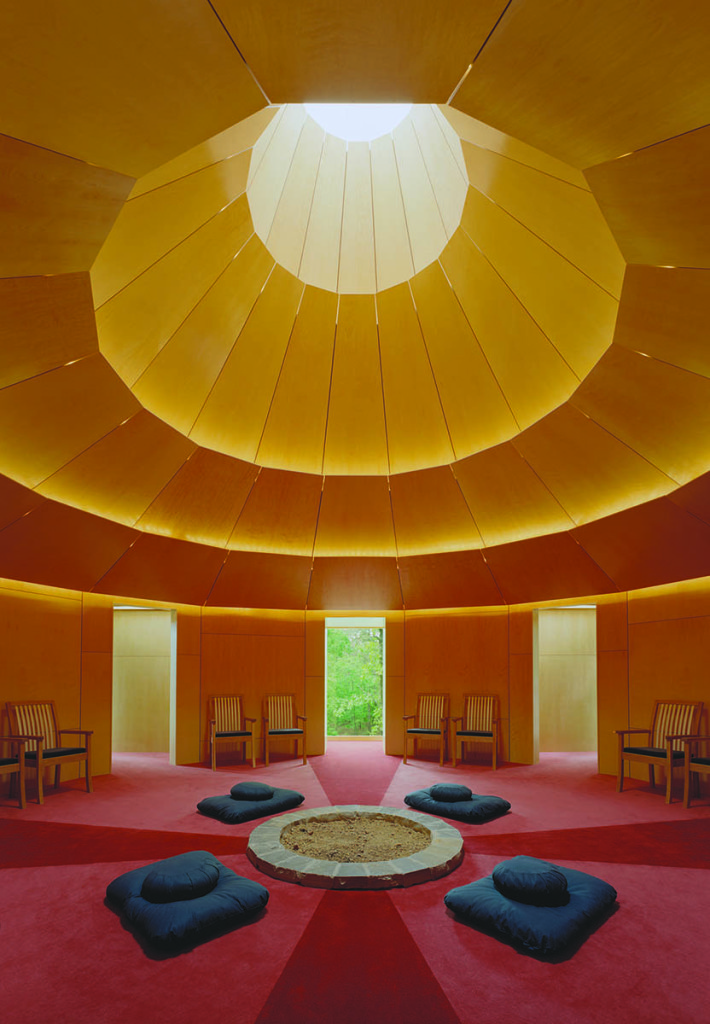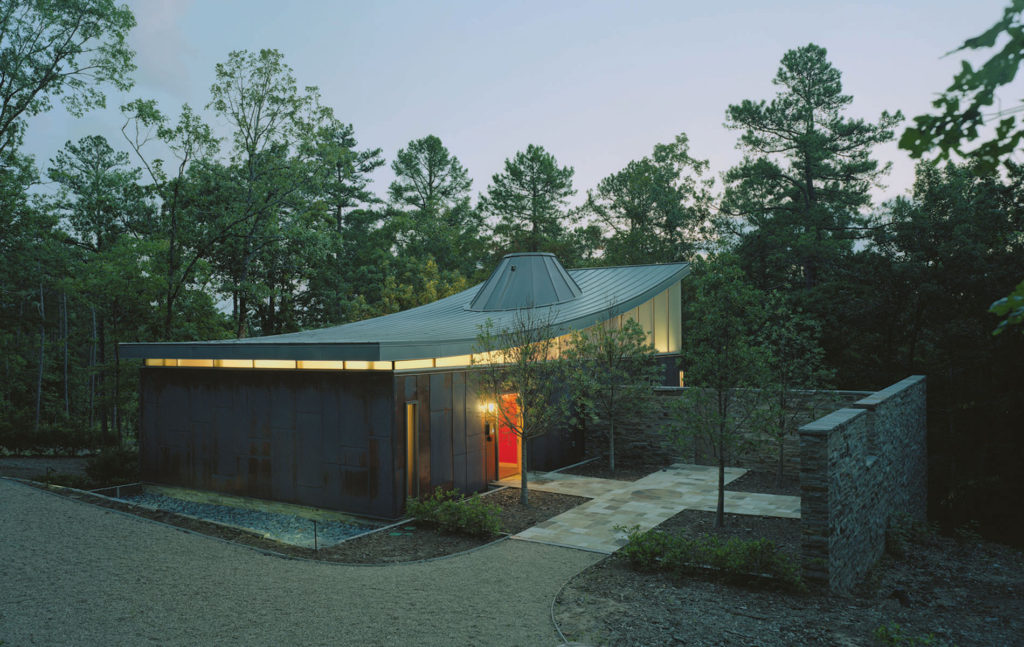A Look Back: Arkansas House of Prayer
A Look Back: Arkansas House of Prayer

When Rev. Susan Sims Smith from the Arkansas House of Prayer read an article in the interfaith journal Faith and Form about a Cuningham Group-designed Episcopalian retreat house, the House of Prayer Oratory at St. Johns University in Collegeville, MN, she knew she wanted one just like it for her Little Rock congregation.
“With very short notice, she showed up at our office in Minneapolis and told John Cuningham that she wanted to buy the plans for the building,” said Associate Principal Daniel Grothe, LEED® AP.
Cuningham sat down with Smith and explained that great buildings are designed for specific sites and local cultures, therefore he would not sell her the plans for the House of Prayer Oratory. He would, however, design for her a unique facility of her own. Smith agreed and work soon began on the Arkansas House of Prayer.

Where Natural and Built Worlds Collide
Grothe, the project architect, wanted the new House of Prayer to compliment the surrounding area. In order to ensure that the House of Prayer blended seamlessly into the heavily wooded site, it was constructed with natural, aging materials, such as copper, native Arkansas stone and Cypress wood. The use of these specific materials meant that the appearance of the building would be constantly changing, just like the natural world around it. As a result, the House of Prayer has since melded into the environment, blurring the line between the built world and the natural. Grothe noted that the building’s form is also a reflection of the surrounding nature.
“The building form and materials work in harmony with its setting,” Grothe said. “The curving roof is a reflection of the hillside, while the random copper siding is an allusion to the distinctive bark of the surrounding Loblolly Pines.”
Other key features include translucent glass, hidden skylights, and scalloped wood walls. The main area of the building is a round, central meditation space with a conical roof, capped by a hidden skylight that gives the appearance of the roof actually being open to the sky. In the middle of the room is a ring that opens up to the ground below, connecting visitors to the earth. Small niches around this central ring provide visitors the opportunity for more personal meditation.
Outside, detailed landscaping provides a welcoming path and meditation garden, both of which signify the beginning of a journey to visitors as they approach the natural, intimate space.

Unique, but Connected
Although the Little Rock House of Prayer was designed specifically for the congregation and local environment, Grothe feels there is a spiritual link between it and the original House of Prayer in Minnesota.
“If you compare the images of the Retreat House at St. John’s and our design for Little Rock, you will see how much we value the individuality of people and place,” Grothe said. “They are very different designs, but they share at their heart a sense of the sacred that uplifts the human spirit.”
The Arkansas House of Prayer has won multiple awards, including the Religious Architecture Design Merit Award in the New Facilities Category, and the Interfaith Forum on Religion, Art and Architecture (IFRAA) Design Award for Religious Architecture—the same award the House of Prayer Oratory at St. Johns University won almost two decades prior.
The Arkansas House of Prayer turned 10-years-old in February 2018 and is a joint ministry of the Episcopal Diocese of Arkansas and St. Margaret’s Episcopal Church.
